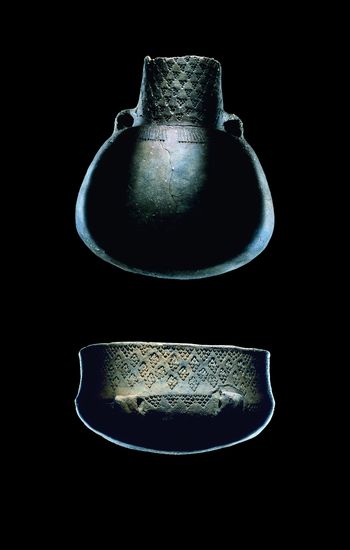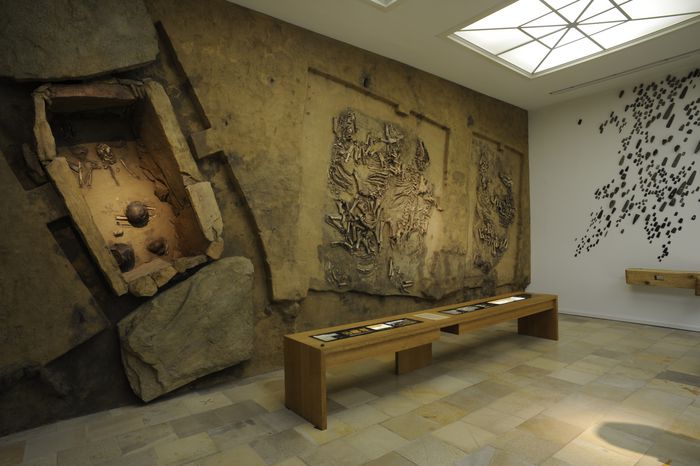Living Changes
The Cattle Baron
Staged vertically, the reconstruction of the findings from Westerhausen offers exceptional prospects of a sensational grave ensemble from the Middle Neolithic: On the end wall of the Neolithic hall are installed the stone cist grave of a probably male, almost 40-year-old person, and two pits containing a total of seven cattle, which were presumably killed during the funeral and buried as a separate ›grave accompaniment‹. The animals were in their prime; their killing was a noticeable loss. The construction of the stone chamber also testifies to the special status of the deceased: it was the work of many hands – the positioning of the almost 600 kilogramme capstone alone manifests enormous effort.
The ›Cattle Baron‹ of Westerhausen is testimony to an increasing hierarchisation of society, which from the Middle Neolithic, for example, becomes tangible through the construction of elaborate burial monuments. While the first farming communities were apparently still organised in flat hierarchies, the sedentary way of life favoured the accumulation of individual and communal property, which increasingly had to be protected and administered. Ruling classes established themselves. Social differences emerged that resulted in fixed social structures. As with the Westerhausen funeral, public prestige or social rank was identified through symbolic collective services for individuals, symbols of dignity, or prestige objects. This changed social behaviour ultimately still has its effect today – hierarchisation as a preliminary stage of the state system.
Here you can find the film on the »Westerhausen« site from the »Museum exklusiv« series of the State Museum of Prehistory »Der Rinderbaron von Westerhausen« (German version only).





